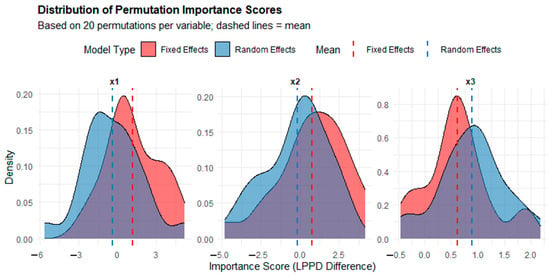- Article
Bayesian Panel Variable Selection Under Model Uncertainty for High-Dimensional Data
- Pathairat Pastpipatkul and
- Htwe Ko
Selecting the relevant covariates in high-dimensional panel data remains a central challenge in applied econometrics. Conventional fixed effects and random effects models are not designed for systematic variable selection under model uncertainty. In addition, many existing models such as LASSO in machine learning or Bayesian approaches like model averaging, Bayesian Additive Regression Trees, and Bayesian Variable Selection with Shrinking and Diffusing Priors have been primarily developed for time series analysis. This paper develops and applies Bayesian Panel Variable Selection (BPVS) models to simulation and empirical applications. These models are designed to assist researchers in identifying which input covariates matter most, while also determining whether their effects should be treated as fixed or random through Bayesian hierarchical modeling and posterior inference, which jointly accounts for variable importance ranking. Both the simulation studies and the empirical application to socioeconomic determinants of subjective well-being show that Bayesian panel models outperform classical models, especially in terms of convergence stability, predictive accuracy, and reliable variable selection. Classical panel models, in contrast, remain attractive for their computational efficiency and simplicity. The Hausman test is used as a robustness check. The study adds an econometric approach for dealing with model uncertainty in high-dimensional panel analysis and offers open-source R 4.5.1 code to support future applications.
4 January 2026




